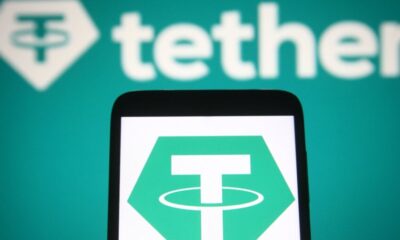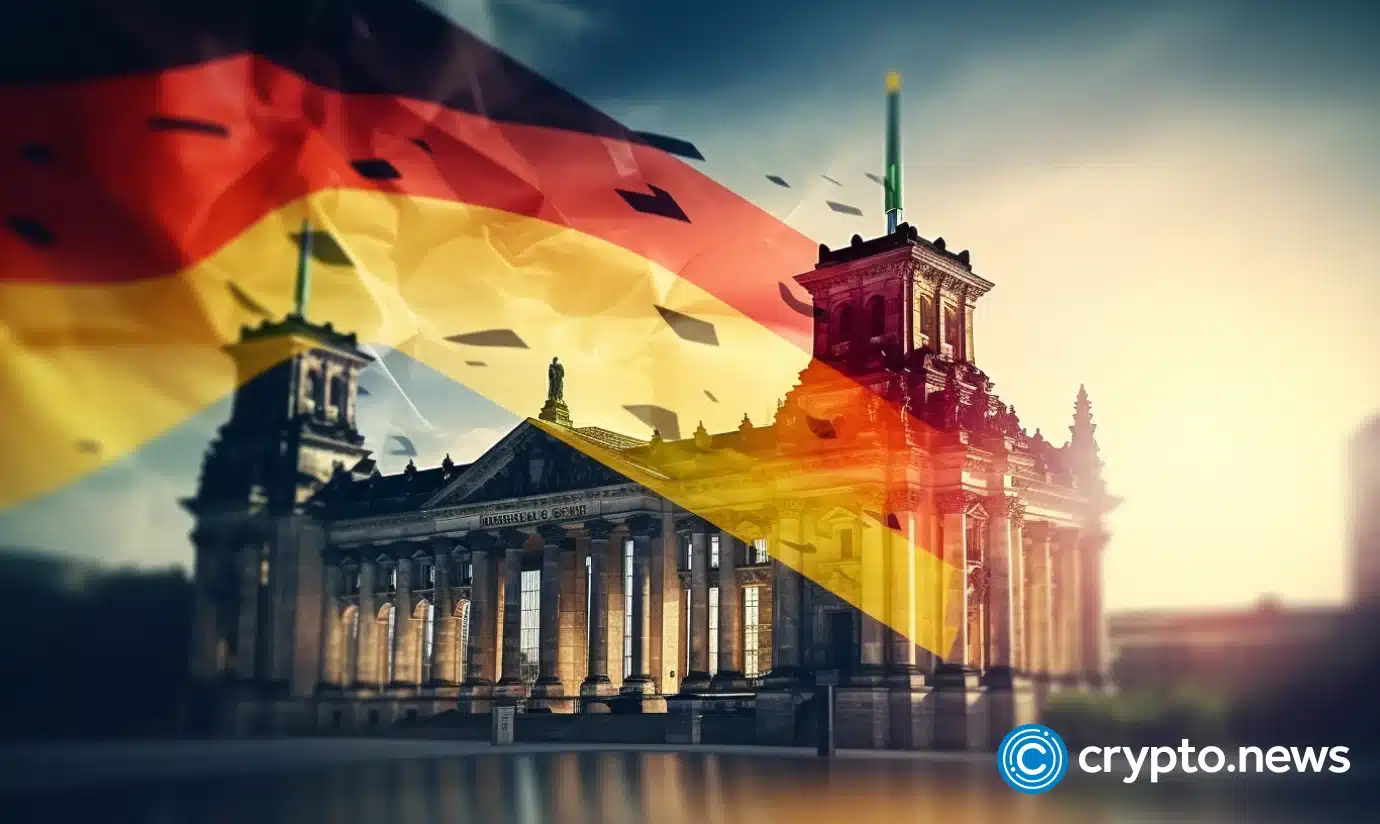mica
Is Bitcoin Self-Custody Under Threat in Europe?
Published
5 months agoon
By
admin

For centuries, self-custody has symbolized financial autonomy, enabling individuals to secure their wealth—from gold to cash—without intermediaries. Bitcoin extends this principle into the digital realm, offering a censorship-resistant, decentralized way to hold assets. Yet, upcoming European regulations under the Markets in Crypto-Assets Regulation (MiCA) and the Transfer of Funds Regulation (TFR) threaten to complicate self-custody for Bitcoin users.
A New Regulatory Era
MiCA, adopted in April 2023, aims to regulate crypto-assets comprehensively in the EU. The revised TFR applies the “Travel Rule” to Bitcoin transactions, requiring detailed sender and recipient information for compliance. These changes will come into effect in 2025, making it harder for Europeans to interact with Bitcoin self-custody wallets without cryptographic proof of ownership.
One proposed solution is the “Satoshi Test,” where users verify wallet ownership by sending a small amount of Bitcoin (e.g., one satoshi) from their wallet to the exchange. While simple for existing holders, this process creates a paradox for new users: they need Bitcoin to verify ownership but cannot acquire Bitcoin without passing the test. This “catch-22” risks alienating new adopters, steering them toward custodial solutions that compromise Bitcoin’s ethos of decentralization and financial sovereignty.
Privacy and Security Risks
In an effort to comply with the new regulations, some exchanges are exploring alternatives to the Satoshi Test; These involve using end-to-end encrypted messages signed using the private key to confirm ownership of the wallet cryptographically for example via the WalletConnect Network. This preserves privacy and yet helps institutions to be compliant.
The core ethos of Bitcoin technology and cryptocurrencies is decentralization and privacy. Centralizing sensitive user data not only creates attractive targets for cybercriminals but also contradicts the principles that have driven the adoption of cryptocurrencies. The recent history of data breaches in the financial sector underscores the dangers of storing large amounts of personal data in centralized repositories.
“Not Your Keys, Not Your Coins”
The adage “Not your keys, not your coins” serves as a reminder of Bitcoin’s core philosophy: control over private keys equals control over assets. Users must carefully evaluate exchanges’ self-custody support, as cumbersome processes or centralized data storage undermine Bitcoin’s promise of financial freedom.
The TFR is only the beginning. Future legislation, like the proposed Payment Services Directive 3 (PSD3), signals growing regulatory scrutiny of Bitcoin self-custody. To preserve Bitcoin’s core values, the industry must proactively develop solutions that comply with regulations while protecting user privacy.
This is a pivotal moment for Bitcoin in Europe. Users should advocate for exchanges that prioritize self-custody and privacy-preserving measures. Exchanges, in turn, must innovate to comply with regulations while staying true to Bitcoin’s decentralized principles.
As Europe tightens its regulatory framework, the choices made by Bitcoin users, exchanges, and regulators will determine whether Bitcoin continues to empower individuals or becomes entangled in centralized systems. By championing privacy and self-custody, we can ensure Bitcoin remains a tool for financial sovereignty and freedom.
This is a guest post by Jess Houlgrave. Opinions expressed are entirely their own and do not necessarily reflect those of BTC Inc or Bitcoin Magazine.
Source link
You may like


As Bitcoin Mining Companies Slump, Tether Loads Up on Bitdeer


Can XRP Price Hit $20? Federal Reserve Hints US Banks Can Use XRP


Kyrgyzstan President Brings CBDC a Step Closer to Reality


Manta founder details attempted Zoom hack by Lazarus that used very real ‘legit faces’


Ethereum Price Fights for Momentum—Traders Watch Key Resistance


Corporate Bitcoin Holdings Hit Record High In Q1 2025 As Public Companies Accelerate Accumulation
crypto taxes
Ukraine Considers Up to 23% Personal Income Tax on Crypto in Newly Proposed Tax Scheme
Published
1 week agoon
April 9, 2025By
admin
Ukraine’s top financial regulator is floating the idea of taxing cryptocurrency as personal income, with possible carveouts for certain foreign asset-backed stablecoins, under a newly proposed taxation matrix published on Tuesday.
In a translated letter introducing the potential new approach, Ruslan Magomedov, head of Ukraine’s National Securities and Stock Market Commission, said that effective tax policy is a necessary step in preventing financial abuse and facilitating the “legal and responsible use of digital assets.”
“Establishing fair and understandable taxation rules is also a prerequisite for attracting investment and integrating the Ukrainian virtual asset market into the global financial market,” Magomedov added.
Under the NSSMC’s suggested tax scheme, certain crypto transactions — essentially those in which non-stablecoin cryptocurrencies are cashed out for fiat currency or exchanged for goods or services, and during which there were no financial losses from the transaction — would be taxed at Ukraine’s standard personal income tax rate of 18%, plus the additional 5% wartime levy that went into effect last December.
Crypto-to-crypto transactions would not be subject to taxation under the proposed tax matrix, which is in line with how several other European countries including Austria and France, as well as crypto-friendly jurisdictions like Singapore, handle crypto taxation.
Because Ukraine’s tax code exempts any income generated from transactions with foreign exchange values from being taxed, the NSSMC suggested “it makes sense to consider a preferential rate or exemption from taxation” for foreign asset-backed stablecoins and certain asset-referenced tokens (ARTs). The suggested preferential tax rate under the matrix could be either 5% or 9%.
The matrix also offered a variety of taxation options for other types of crypto transactions, including mining, which the NSSMC suggested could be considered a “business activity”; staking, which the regulator said could either be “considered as business captive income” or taxed only at the cash-out stage; as well as hard-forks and airdrops, which the regulator said could either be taxed as ordinary income or only at the cash-out stage.
Ukraine had previously introduced a draft law similarly amending the country’s tax code to cover cryptocurrency in 2023. A 2024 analysis from Swiss blockchain analytics firm Global Ledger found that Ukraine could stand to collect over $200 million in annual taxes from crypto transactions.
Ukrainian President Volodymyr Zelensky officially legalized the country’s cryptocurrency sector in 2022, determining the industry’s regulators and giving them the go-ahead to create specific regulations. The National Bank of Ukraine is currently working on a draft law based on the European Union’s (EU) Markets in Crypto Assets (MiCA) regulation.
Ukraine has been a candidate for EU membership since 2022.
CoinDesk reached out to the NSSMC for a comment.
Source link


The German Federal Financial Supervisory Authority, BaFin, has ordered Ethena GmbH to stop all public sales of its stablecoin USDe.
This comes after the German financial markets regulator found serious flaws in Ethena GmbH’s USDe approval process.
Per the BaFin announcement on March 21, 2025, the public sales of Ethena (ENA)’s synthetic dollar Ethena USDe violates the European Union’s Markets in Crypto Asset Registration rules.
With stablecoin regulation being one of the EU’s major enforcement priorities, a lack of MiCAR compliance has become a key obstacle for stablecoin issuers.
“The BaFin also has reasonable grounds to suspect that Ethena GmbH in Germany sells securities in the form of sUSDe tokens from Ethena OpCo. Ltd. without the required prospectus,” the regulator said.
BaFin has therefore ordered Ethena to immediately cease any sales to the public.
Enforcement measures
The enforcement measures include a freeze on USDe reserves held by Ethena’s custodian. Additionally, Ethena GmbH is required to shut down its website portal and stop registering new customers.
While Ethena GmbH has been prohibited from selling USDe, the order only applies to primary sales. In this case, BaFin’s order does not affect secondary sales. Ethena Labs issued a statement on X following the news.
“We were informed today that Ethena GmbH’s application under the MiCAR regulatory framework will not be approved. While we are disappointed by this decision, we will continue to evaluate alternative frameworks.”
According to the crypto platform, BaFin’s order doesn’t affect the stablecoin’s listing.
The decision will also not affect minting and redemption through Ethena Limited, the company’s entity registered in the British Virgin Islands, which handles the majority of USDe minting.
“USDe remains fully backed [and] no assets have been “frozen”” Ethena noted.
Source link
24/7 Cryptocurrency News
Binance To Delist Non-MiCA Compliant Stablecoin Trading Pairs In Europe
Published
2 months agoon
March 3, 2025By
admin
Cryptocurrency exchange giant Binance again nabbed significant investor attention with its latest announcement on Monday. The crypto trading platform revealed that it will be delisting all non-MiCA-compliant stablecoin trading pairs in the EEA (European Economic Region) shortly.
Binance To Delist Non-MiCA Compliant Stablecoin Trading Pairs In EEA
According to an official Binance announcement on March 3, the crypto exchange is implementing changes to non-MiCA-compliant stablecoin trading pairs in the EEA region. As per the announcement, trading pairs with USDT, FDUSD, TUSD, USDP, DAI, AEUR, UST, USTC, and PAXG will be delisted for EEA users on March 31.
However, MiCA-compliant stablecoins pairs, such as USDC, EURI, and fiat pairs (EUR) will remain available. Simultaneously, the crypto exchange also urged EEA users to convert any remaining non-MiCA compliant stablecoin holdings (e.g., USDT) to USDC, EURI, or EUR.
Why Is Binance Delisting Stablecoin Trading Pairs?
Meanwhile, it’s also noteworthy that Binance rolled out its latest delisting announcement following recent stablecoin-related guidelines from EU authorities. As a result, the top crypto exchange is making changes to the availability of non-MiCA-compliant stablecoins in the EEA.
What’s More?
Starting March 31 at 23:59 UTC, the exchange will restrict the availability of Spot trading pairs pegged to non-MiCA Compliant Stablecoins. Further, starting March 27 at 07:00 UTC, any non-MiCA compliant Margin trading pairs will also be delisted for EEA users.
Other services like trading bots, earn, and loans will also be impacted for users. Nevertheless, the exchange clarified that users will still be able to sell any remaining non-MiCA-compliant stablecoin holdings after March 31.
Binance Continues Modifying Trade Offerings
Simultaneously, with the abovementioned endeavor weighing in, the leading cryptocurrency exchange further cements its top ranking in the market. Notably, Binance has secured the top spot by constantly enhancing trade offerings in line with market needs.
CoinGape recently reported that the exchange extended support to the Ethernity Chain (ERN) token swap process, sparking an ERN price upswing. On the other hand, the CEX also delisted key BNB and ETH trading pairs, adding to its foray into revolutionized offerings.
Coingape Staff
CoinGape comprises an experienced team of native content writers and editors working round the clock to cover news globally and present news as a fact rather than an opinion. CoinGape writers and reporters contributed to this article.
Disclaimer: The presented content may include the personal opinion of the author and is subject to market condition. Do your market research before investing in cryptocurrencies. The author or the publication does not hold any responsibility for your personal financial loss.
Source link

As Bitcoin Mining Companies Slump, Tether Loads Up on Bitdeer

Can XRP Price Hit $20? Federal Reserve Hints US Banks Can Use XRP

Kyrgyzstan President Brings CBDC a Step Closer to Reality

Manta founder details attempted Zoom hack by Lazarus that used very real ‘legit faces’

Ethereum Price Fights for Momentum—Traders Watch Key Resistance

Corporate Bitcoin Holdings Hit Record High In Q1 2025 As Public Companies Accelerate Accumulation

‘Big Short’ Investor Steve Eisman Derisks, Says Stock Market Volatility Will Be Here for a While

Dow drops over 500 points as UnitedHealth tanks, Fed tensions weigh on markets

Gold Is Still the Safe-Haven King, While Bitcoin Loses Out: JP Morgan

Dogecoin Price Breakout in view as Analyst Predicts $5.6 high

Bitcoin (BTC) Price in Standstill at $85K as Trump Increases Pressure on Fed’s Powell

Ripple acquisition Hidden Road secures FINRA registration

Ethereum Whales Offload 143,000 ETH In One Week – More Selling Ahead?

How Do We Protect Bitcoin From Quantum Computers? Not With A Joke

OKX Goes Live In The US After Setting Up New Headquarters in San Jose, California

Arthur Hayes, Murad’s Prediction For Meme Coins, AI & DeFi Coins For 2025

Expert Sees Bitcoin Dipping To $50K While Bullish Signs Persist

Aptos Leverages Chainlink To Enhance Scalability and Data Access

3 Voting Polls Show Why Ripple’s XRP Price Could Hit $10 Soon

Bitcoin Could Rally to $80,000 on the Eve of US Elections

Crypto’s Big Trump Gamble Is Risky

Sonic Now ‘Golden Standard’ of Layer-2s After Scaling Transactions to 16,000+ per Second, Says Andre Cronje

Institutional Investors Go All In on Crypto as 57% Plan to Boost Allocations as Bull Run Heats Up, Sygnum Survey Reveals

Ripple-SEC Case Ends, But These 3 Rivals Could Jump 500x

The Future of Bitcoin: Scaling, Institutional Adoption, and Strategic Reserves with Rich Rines

Has The Bitcoin Price Already Peaked?

A16z-backed Espresso announces mainnet launch of core product

Xmas Altcoin Rally Insights by BNM Agent I

Blockchain groups challenge new broker reporting rule

I’m Grateful for Trump’s Embrace of Bitcoin
Trending

 24/7 Cryptocurrency News5 months ago
24/7 Cryptocurrency News5 months agoArthur Hayes, Murad’s Prediction For Meme Coins, AI & DeFi Coins For 2025

 Bitcoin3 months ago
Bitcoin3 months agoExpert Sees Bitcoin Dipping To $50K While Bullish Signs Persist

 24/7 Cryptocurrency News3 months ago
24/7 Cryptocurrency News3 months agoAptos Leverages Chainlink To Enhance Scalability and Data Access

 Ripple Price4 weeks ago
Ripple Price4 weeks ago3 Voting Polls Show Why Ripple’s XRP Price Could Hit $10 Soon

 Bitcoin5 months ago
Bitcoin5 months agoBitcoin Could Rally to $80,000 on the Eve of US Elections

 Opinion5 months ago
Opinion5 months agoCrypto’s Big Trump Gamble Is Risky

 Altcoins3 months ago
Altcoins3 months agoSonic Now ‘Golden Standard’ of Layer-2s After Scaling Transactions to 16,000+ per Second, Says Andre Cronje

 Bitcoin5 months ago
Bitcoin5 months agoInstitutional Investors Go All In on Crypto as 57% Plan to Boost Allocations as Bull Run Heats Up, Sygnum Survey Reveals



✓ Share: